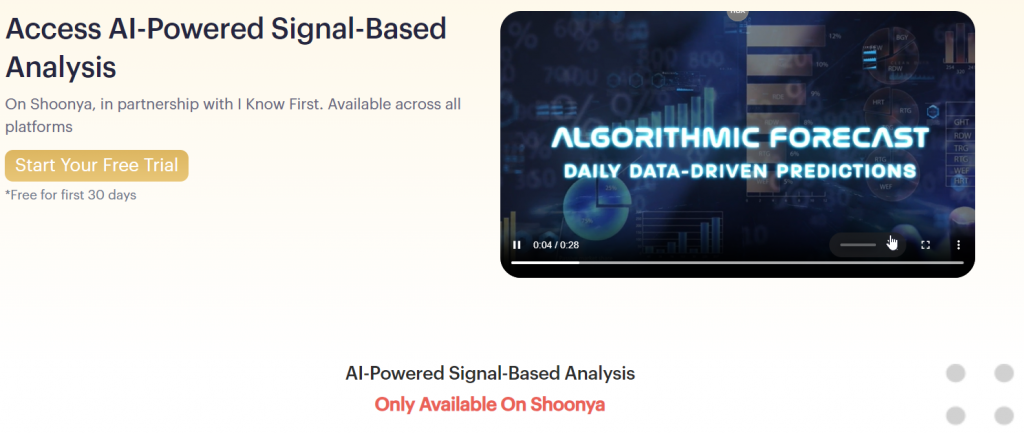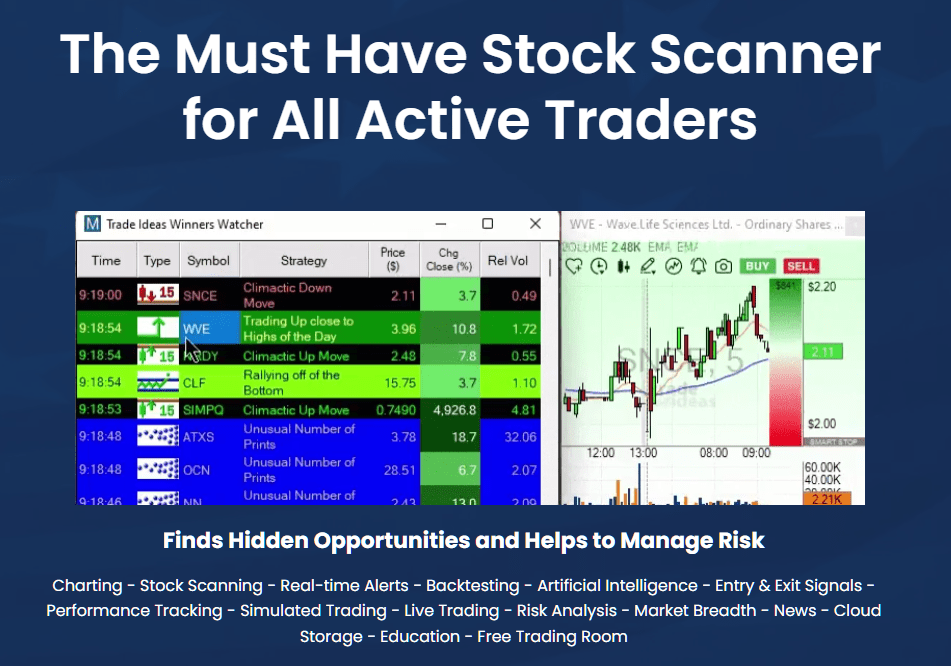20 Top Suggestions For Picking AI Stock {Investing|Trading|Prediction|Analysis) Websites
20 Top Suggestions For Picking AI Stock {Investing|Trading|Prediction|Analysis) Websites
Blog Article
Top 10 Tips To Assess The Market Coverage For Ai Software For Predicting And Analysing Stocks
Market coverage is one of the most important factors to consider when evaluating AI-powered trading platforms. This determines how many market and asset types can be accessed. Market coverage is essential because it allows you to diversify, explore the world's markets, and adjust different trading strategies. Here are 10 tips for evaluating the coverage of the platforms.
1. Evaluate Supported Asset Classes
Stocks: Make sure the platform is able to cover the major exchanges for stocks (e.g., NYSE, NASDAQ, LSE, HKEX) and includes small-cap large-cap and mid-cap stock.
ETFs: Verify that the platform provides a variety of ETFs to provide diversified exposure across sectors, themes and even regions.
Futures and options. Find out whether your platform provides derivatives including options, futures or other leveraged instrument.
Commodities and Forex. Check to see whether there are any forex pairings available, as well as precious metals, energy-related commodities, and other agricultural commodities.
Cryptocurrencies Find out if the platform can support popular cryptocurrencies like Bitcoin, Ethereum, and altcoins.
2. Check the Coverage Area
Global markets: The platform should include major global markets like North America and Europe, Asia-Pacific and emerging markets.
Concentrate on regional markets: Find out if a platform is focused on specific regions or specific markets that are aligned with your trading goals.
Local exchanges: Verify if your platform supports local and regional exchanges that match your needs or your plan.
3. Comparing Real-Time Data to Delayed Data Data that is delayed
Real-time data - Ensure that the platform provides live market data that can aid you in making quick choices, especially for traders who are active.
Information that is delayed: Find out whether delayed information is accessible for free or at discounted this could be enough for investors who have an eye on the long term.
Data latency. Check to see how your platform can reduce the amount of latency for real-time feeds.
4. Evaluation of Historical Data
Depth of Historical Data: Make sure the platform has a large amount of historical data that can be used for backtesting analysis, testing and analysis (e.g. 10or more years).
Examine the precision in historical data.
Corporate actions - Examine historical data to ensure that it covers stock splits, dividends as well as other corporate activities.
5. Check market depths and order books
Level 2 data: Make sure the platform provides Level 2 data (order book depth) to facilitate price search and execution.
Make sure that your platform displays real-time price spreads.
Volume data: Check if your platform provides specific volume data for analyzing market liquidity and market activity.
6. Examine the coverage of Indices and Sectors
Major indices : Ensure you have a platform that includes the major indexes. (e.g. S&P 500, NASDAQ 100, FTSE 100 ) This is important to benchmark your strategy and also for index-based strategies.
Sector-specific data: See whether the platform offers data specific to certain industries (e.g. technology health, energy, etc.)) to conduct a targeted analysis.
Custom indices: Verify if the platform allows the creation of or tracking of custom indices based on your criteria.
7. Test the integration of News and Sentiment Data
News feeds - Make sure the platform is integrating real-time news feeds for market-moving news from trusted (e.g. Bloomberg or Reuters) sources.
Sentiment Analysis: Check whether the platform has tools for analyzing sentiment that are made from news, social media or other data sources.
Event-driven strategies (e.g. economic announcements, earnings announcements) Verify if your platform supports trading strategies that rely on events.
8. Make sure you are aware of Multi Market Trading Capabilities
Cross-market trading : Make sure the platform supports trading on multiple markets, asset classes and exchanges via an interface that is single.
Currency conversion: Check if your platform supports multi-currency trading and automated currency conversion.
Support for time zones: Verify if your platform allows you to trade in multiple time zones.
9. Assess Coverage of Alternative Data Sources
Alternative data: To get new insights, make sure that the platform incorporates other sources of data.
ESG data - Make sure that the platform is able to provide environmental, social, and governance information (ESG). This is essential for a the socially conscious investment.
Macroeconomic data - Make sure that the platform has macroeconomic information (e.g. inflation, GDP) for fundamental analysis.
10. Review Customer Feedback and Market Reputation
User reviews: Look for reviews from users to get a feel for the platform.
The reputation of the market Know whether there are any prizes or experts who acknowledge the platform's broad coverage of markets.
Case studies: Look for testimonials or case studies that showcase the platform's effectiveness in certain markets or asset classes.
Bonus Tips:
Trial time: You can use a demo, trial or free trial to check the coverage of markets and the data quality.
API access - Verify whether the API can be used to access information on the market by programming.
Customer support: Ensure the platform offers support for market-related queries or data-related issues.
By using these tips you can accurately assess the coverage of AI stock prediction/analyzing trading platform. It is then possible to select a trading platform that offers you the market and the necessary information to be successful in your trades. Market coverage that is comprehensive will let you diversify, discover options, and tailor your portfolio in response to market conditions. Follow the top rated best stock analysis website for blog examples including ai investment platform, best ai stock, ai trading bot, best ai trading software, stock analysis tool, ai copyright trading bot, copyright ai trading bot, ai stock trading bot free, canadian ai stocks, ai stock trading app and more.
Top 10 Tips For Evaluating The Speed And Latency Of Ai Stock Predicting/Analyzing Trading Platforms
When you are evaluating AI trading platforms which predict/analyze the price of stocks the speed and latency of processing are crucial factors, especially for high-frequency and algorithmic traders. Even millisecond delay can have an impact on the profitability of a trade. Here are 10 top tips for measuring the speed of your platform.
1. Data feeds that are real-time: How do you analyze them
Data delivery time: The platform must provide real-time, accurate information within a short period of time (e.g. with sub-millisecond delays).
Data source proximity – Check to see if your servers on your platform are close to major exchanges. This will reduce the speed of data transmission.
Data compression: Verify if the platform uses efficient data compression techniques to speed up the delivery of data.
2. Test Rate for Trade Execution Rate
Time to process orders: Determine how quickly the platform process and executes trades once you have submitted an order.
Direct Market Access (DMA) - Ensure that the platform supports DMA. This lets orders go directly to the exchange without the need for intermediaries.
Look for more detailed reporting on execution, which includes timestamps and confirmations of the order.
3. Review the responsiveness of the Platform
User interface (UI) speed: Check the speed at which the UI of your platform responds to your inputs (e.g. pressing buttons, loading charts).
Updates to charts - Check that the charts are updated immediately and without any delay.
Mobile app performance. If you're using a mobile app that is running, it will perform as quickly as its desktop counterpart.
4. Verify that the infrastructure is low latency
Server Locations: Select servers with low-latency that are near major financial centers or exchanges.
Co-location: If the platform offers co-location, you are able to host your trading algorithm on servers close to the exchange.
High-speed Networks: Check the platform's use of high-speed, fiber-optic network, or other technology with low latency.
5. Assessing the speed of simulation and backtesting
Find out how quickly the platform processes and analyzes old data.
Simulation latency: Ensure that the platform can simulate trading in real time without noticeable delays.
Parallel processing: Check whether the platform is using parallel processing or distributed computing to speed up the complexity of calculations.
6. Assess API Latency
API response time: Measure how quickly the platform's API responds to requests (e.g. getting market data, placing an order).
Limits on rates. Check the API's rate limits in order to avoid delays during high-frequency trading.
WebSocket support: Find out whether the platform supports WebSocket protocols for real-time, low-latency streaming of data.
7. Test Platform Stability with Load
High-volume trading: Simulate high-volume trading scenarios to see if the platform remains reliable and stable.
Market volatility: Ensure the platform can manage price fluctuations in times that are high-risk.
Use the tools on the platform to test your strategies under extreme conditions.
8. Assess the connectivity and network of your choice
Speed requirements for Internet: Ensure your connection is up to the recommended platform speed.
Redundant connections: Verify that your platform is equipped with redundant internet connections. This can help you keep your system from experiencing interruptions.
VPN latency. Verify if you are using the VPN to determine if it causes latency.
9. Make sure you are using Speed Optimization features.
Pre-trade analyses The platform should offer pre-trade analyses to optimize the process of routing orders and speed up execution.
Smart order routing: Determine if your platform is using SOR to find the fastest and most cost-effective execution venue.
Check the platform's tools to analyse and monitor latency in real-time.
User Feedback and Review Benchmarks
User feedback: Read reviews of users to evaluate the performance of the platform with regard to the speed of its operation and latency.
Third-party benchmarks: Seek out independently-run benchmarks or reviews that compare the speed of the platform with competitors.
Case studies: Check if the platform offers cases studies or testimonials, that highlight its ability to work with low-latency.
Bonus Tips
Free trial period: Try the platform's performance and latency in real-world scenarios by using a demo or free trial.
Support for customers: Ensure that the platform provides customer support in order to reduce latency or other issues.
Hardware requirements: Check whether you require special hardware to get the best performance (e.g. high-performance PCs).
These guidelines will assist you evaluate the speed and latency of AI platform for stock prediction and analysis. So you'll be able choose a platform which meets your requirements while also reducing delays. The ability to reduce latency is crucial for traders who trade high-frequency, or algorithmically where even small delays can be a significant factor in their performance. Read the most popular ai stocks for site tips including stock analysis app, trading ai bot, ai trading, stock ai, ai stock picks, ai for investing, stock ai, ai investing app, stock analysis tool, free ai trading bot and more.